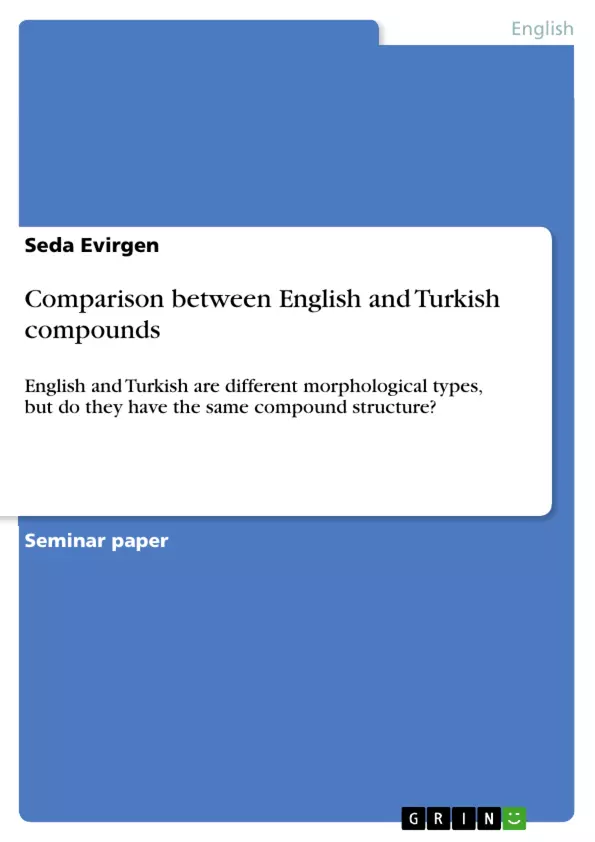This term paper will give an overview of compounds in general, about the stress and the types of compounds. Furthermore, to take a closer look at the languages comes the differentiation of nominal compounds, adjective compounds and verbal compounds in English and Turkish. The final point is the analysis of the differences and similarities of English and Turkish compounds.
With the help of word formation processes we form new words and there are many different processes that lead to many different new words. Compounding is a morphological operation where two or more free morphemes create one complex morpheme. Compounds are very important because they can prevent ambiguity if you just take a closer look at them and there are probably no languages without compounding. Every language is in need of compounded words because of the new inventions and changes in our society everyday. One of the most important and often used word formation processes is compounding.
This term paper presents a general overview of the structure of compounds in English and Turkish. Because my mother language is Turkish and I study English, I was really interested in the differences between the English and Turkish language. English is an analytic language and Turkish an agglutinating language therefore it makes it more interesting to analyze.
Table of Contents
- Introduction
- Compounds in general
- What is compounding?
- Stress
- Types of compounds
- Structure of English Compounds
- Nominal compounds
- Adjective compounds
- Verbal compounds
- Structure of Turkish compounds
- Nominal compounds
- Adjective compounds
- Verbal compounds
- Differences and Similarities
- Conclusion
Objectives and Key Themes
This term paper provides an overview of the structure of compounds in English and Turkish, focusing on the differences and similarities between these two languages.
- The process of compounding as a word-formation process
- The structure and types of compounds in English and Turkish
- The role of stress in identifying compounds
- The classification of compounds based on their head and non-head elements
- The differences and similarities between English and Turkish compounds
Chapter Summaries
- Introduction: This chapter introduces the topic of compounding as a word-formation process and its importance in language development. It also highlights the specific focus of the paper on comparing English and Turkish compounds.
- Compounds in general: This chapter defines compounding as a word-formation process and discusses the different ways compounds can be written. It also examines the role of stress in identifying compounds and introduces the concept of the head and non-head elements in compounds.
- Structure of English Compounds: This chapter analyzes the structure of nominal, adjective, and verbal compounds in English, highlighting the role of the head element in determining the word class of the compound.
- Structure of Turkish compounds: This chapter explores the structure of nominal, adjective, and verbal compounds in Turkish, comparing and contrasting them with their English counterparts.
Keywords
This paper focuses on the key concepts of compounding, word formation, morphology, English, Turkish, analytic language, agglutinating language, stress, head, non-head, endocentric compounds, exocentric compounds, nominal compounds, adjective compounds, verbal compounds, and differences and similarities between English and Turkish compounds.
- Quote paper
- Seda Evirgen (Author), 2015, Comparison between English and Turkish compounds, Munich, GRIN Verlag, https://www.grin.com/document/338940



